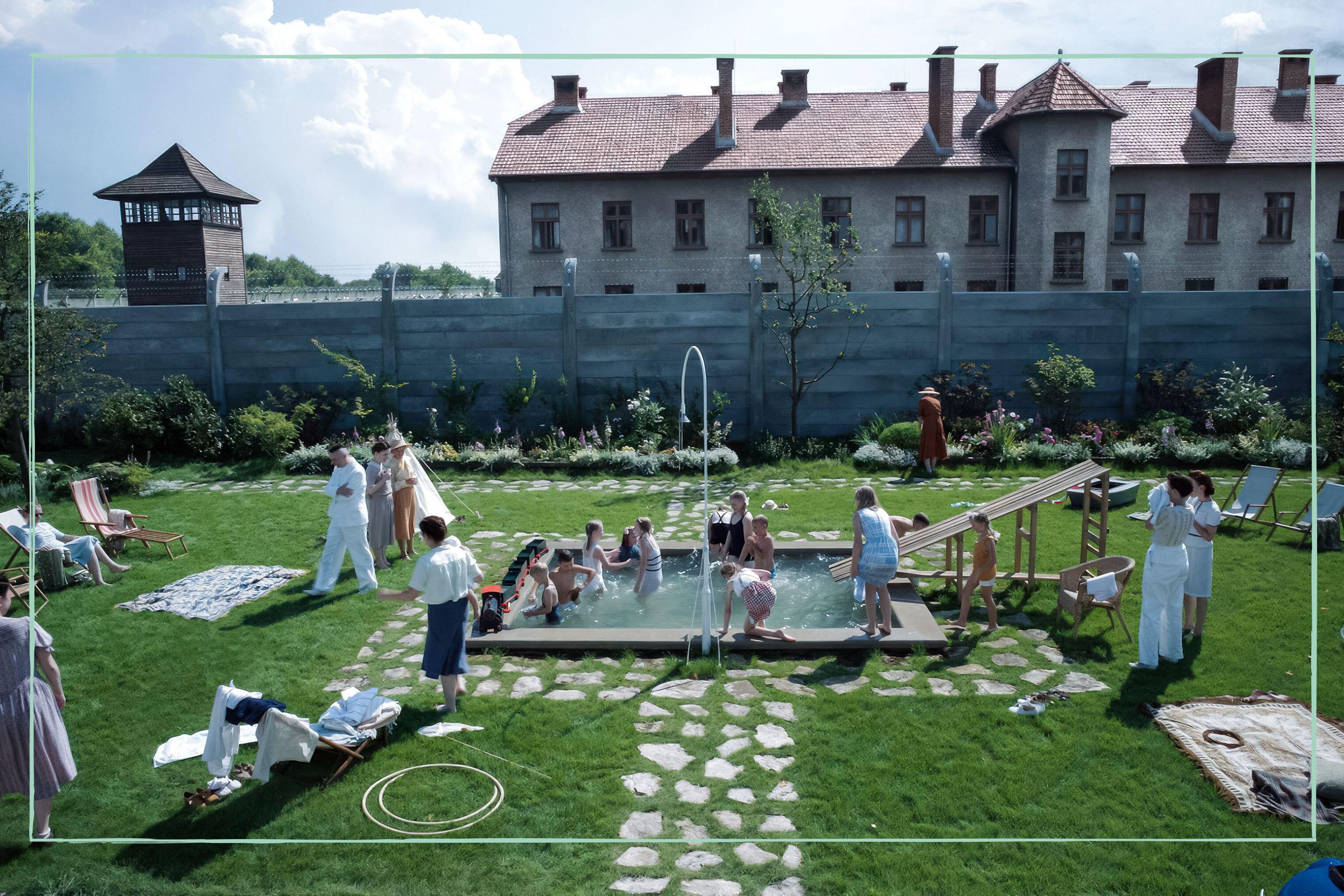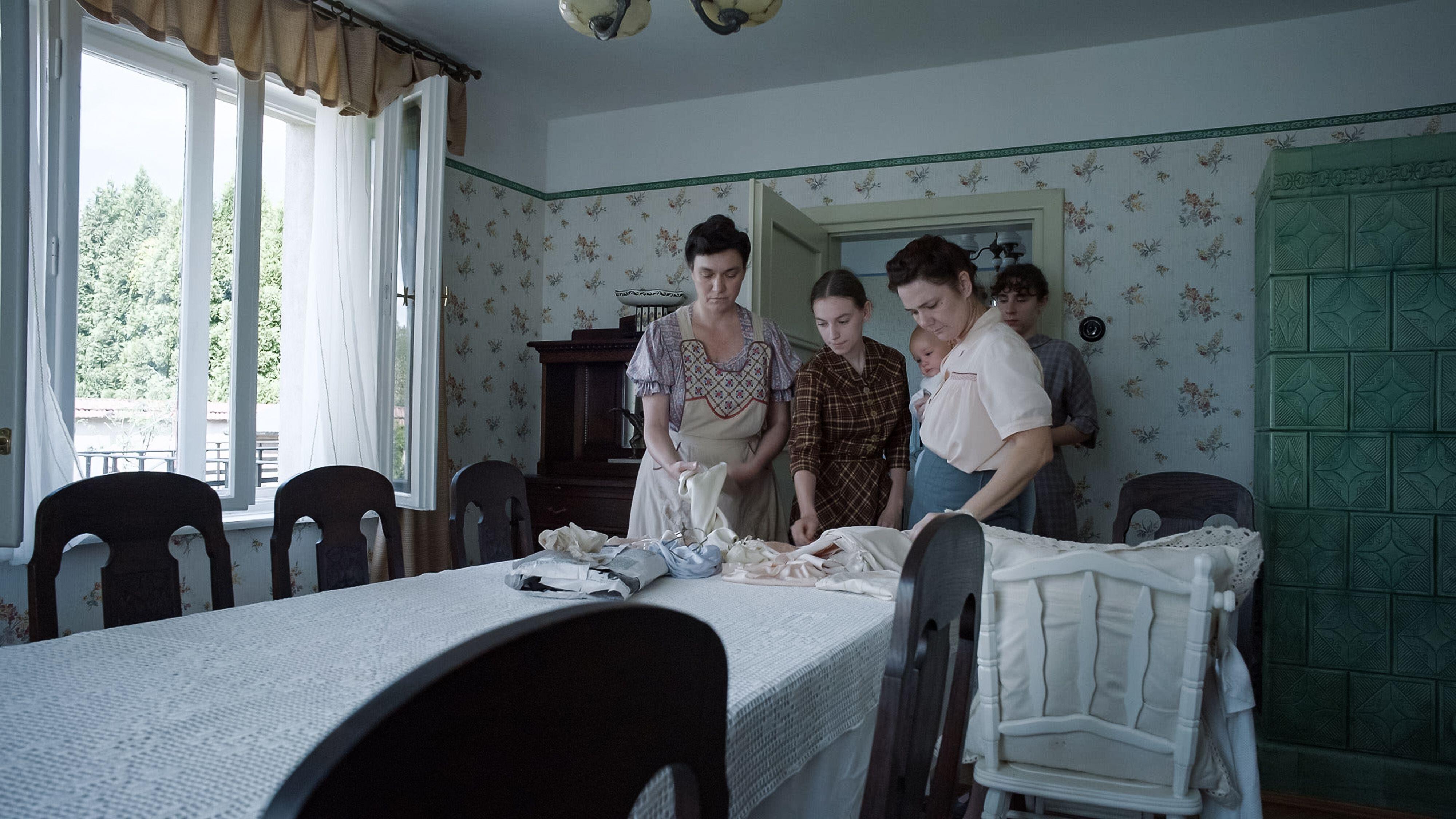
What is The Zone of Interest based on? As the haunting film brings in the accolades, we look at the story behind it and what happened to the Höss family after the war.
The Zone of Interest depicts the life of commandant of the Auschwitz concentration camp, Rudolf Höss, and the life he lives with his family next door to the death camp. In 1943, Höss and his wife Hedwig lived an idyllic existence with their five children, growing vegetables and flowers, picnicking by the river, with servants to help around the home. In stark contrast, an aural backdrop on the other side of the family's garden wall tells of the horrors going on, ignored, under their noses. Gunshots, shouting, furnaces, and the sound of trains arriving, offer harrowing insight into the depravity inflicted on those imprisoned in the camp.
The film has already won three BAFTAs, and has been nominated for five Academy Awards and three Golden Globe Awards. This has left audiences wondering what formed the basis of the story, and what happened to the Höss family when the war came to an end. Similarly, the crimes of drug lord Griselda Blanco also left viewers of Netflix's Griselda asking for the whereabouts of her children now, and what happened to her three husbands. Liz Golyar undertook a crime spree that took detectives years to unravel - Lover, Stalker, Killer raised questions about her current whereabouts too.
What is The Zone of Interest based on?
The Zone of Interest is very loosely based on the 2014 novel of the same name, by Martin Amis. However, apart from sharing a title and two main characters, The Zone of Interest film really is quite different to the book.
The book tells the story of a Nazi officer falling in love with the wife of a camp commandant. The officer is named Angelus Thomsen, while the commandant and his wife, Paul and Hannah Doll, are fictionalised versions of Rudolph and Hedwig Höss. The film is more of a real life character study of the Höss's, building an uncomfortable picture of their family life, rather than the dark humour of the love triangle found in the book.
On book review site Good Reads, one reviewer wrote of the novel: "A comic novel set in Auschwitz is always going to be a hard feat to pull off but Amis' thrilling virtuosity with language quickly overrides all misgivings. In fact Amis' comedy works better at evoking the sheer insanity of the Nazis than the gravitas of the soul searching later in the novel."
They added, "The story revolves around the commandant's difficult relationship with his wife and the challenge a serial womaniser, a nephew of Martin Bormann, sets himself to seduce her. All the insane horror of the camp is thus a backdrop to an elaborate tussle of sexual pride. I can think of few writers who write better than Amis does."
Another said "Chilling. Absolutely chilling. A view into the wretched soul of the other side. Like looking at a bad car wreck. Sick to your stomach, but cannot help but look. And yet, among the carnage, humanity and love creep in. A page-turner for sure. One of the best books I have read in a long time.
"I understand that this book is supposed to be a satire. I thought I might have seen it in a couple places, maybe. If so, I think it very subtle."
What does The Zone of Interest refer to?
The Zone of Interest is a translation of the German word, 'interessengebiet.' Auschwitz I and Auschwitz II-Birkenau camps were cut off from the world with barbed wire fencing, and surrounded by around 40 square kilometres of ground to keep them isolated. These areas were also patrolled by guards, and named the interest zone, or interessengebiet.
The Höss family lived directly next to the camp and therefore within the zone of interest - presumably the inspiration for the book title. According to Smithsonian Magazine, Rudolph Höss maintained in his autobiography that his wife had no knowledge of what was going on at Auschwitz.
However, this is disputed due to evidence that she selected expensive fur coats to wear, left behind by murdered prisoners, and had inmates working at her home undertaking forced labour. Historians have suggested she knew what was happening, but simply chose to be silently complicit.
In the film, Hedwig certainly alludes to knowing what is going on just over her garden wall - at one point she tells one of her servants her husband could easily have her reduced to a pile of ash. Writer and director Jonathan Glazer spoke about the narrative decision to humanise Rudolph and Hedwig for the film.
He said, "I wanted to dismantle the idea of them as anomalies, as almost supernatural. You know, the idea that they came from the skies and ran amok, but thank God that’s not us and it’s never going to happen again. I wanted to show that these were crimes committed by Mr. and Mrs. Smith at No. 26."

What happened to the real Rudolf Höss and his family?
Rudolph Höss was hanged on April 16, 1947, at the age of 45. The execution took place at Auschwitz, with around 100 witnesses - some of these included former prisoners of the camp he once commanded.
After the war, he changed his name to Franz Lang and went on the run with his family. He was working as a gardener in Gottrupel, Schleswig-Holstein, when he was caught by Hanns Alexander. Alexander was a German Jew who took refuge in England in 1936. He later became one of the British Government's top Nazi hunters.
While evading capture, Hedwig Höss was working in a sugar factory. She died in Washington DC in 1989 while visiting her daughter Brigitte who had emigrated there - she was 81 at the time. According to History Extra, her son Klaus had emigrated to New South Wales, and died in 1986 as a result of chronic alcohol abuse.
As per the Independent, Brigitte had moved to Spain after the war, and became a model for Balenciaga. She later met an Irish-American engineer and married in 1961, having two children. Her husband knew her history, but they never spoke of it, and her children and grandchildren knew nothing of it.
Brigitte was diagnosed with cancer in 2013, and is likely deceased. Remaining siblings Annegret, Hans Jürgen, and Heidetraud, remained in Germany after the war, and it is unclear whether they are still alive.
Those tuning into a Netflix war drama asked whether All The Light we Cannot See is based on a true story, and where the Steven Knight penned drama was filmed. For more wartime drama, we also looked at the basis for A Small Light, a story not often heard.







